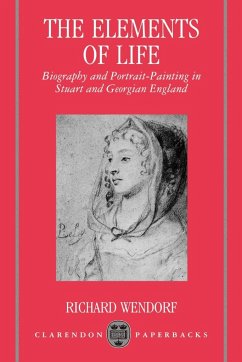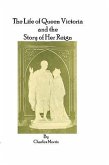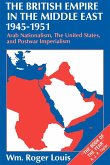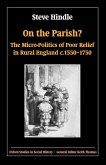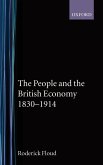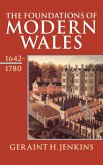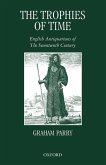In this ambitious study, Richard Wendorf establishes the grounds of comparison between two arts that have often been linked in a casual way but whose historical interrelations remain almost completely unexplored. By focusing on the great age of English portraiture - from the arrival of Van Dyck to the publication of Boswell's Life of Johnson - the author shows that, despite their obvious differences, visual and verbal portraits often shared similar assumptions about the representation of historical character. Grounded in modern theory devoted to the comparison of literature and painting and to the problem of representation, this book examines each form of portraiture in terms of the other. Among those writers considered are Izaak Walton, John Evelyn, John Aubrey, Roger North, Goldsmith, Johnson, Mrs Piozzi, Boswell; among the artists are Van Dyck, Lely, Samuel Cooper, Jonathan Richardson, Hogarth and Reynolds. The careers of 'double agents' (painters, like Richardson and Reynolds, who experimented with biographical writing) are also discussed. The Elements of Life is a ground-breaking critical history of biography and portrait-painting in the seventeenth and eighteenth centuries.
In this bold new study, Wendorf compares two arts--biography and portrait-painting--that have often been linked in a casual way but whose historical connections have remained unexplored. Reassessing the great age of English portraiture--from the arrival of Van Dyck to the publication of Boswell's Life of Johnson--Wendorf reveals that, despite their obvious differences, visual and verbal portraits often shared similar assumptions about the representation of historical character. Rooted in modern theory devoted to the comparison of literature and painting and to the problem of representation, the book examines each form of portraiture in terms of the other, bringing into discussion such writers as Izaak Walton, John Evelyn, John Aubrey, Roger North, Goldsmith, Johnson, Mrs. Piozzi, Boswell, and such artists as Van Dyck, Lely, Samuel Cooper, Jonathan Richardson, Hogarth, and Reynolds.
Hinweis: Dieser Artikel kann nur an eine deutsche Lieferadresse ausgeliefert werden.
In this bold new study, Wendorf compares two arts--biography and portrait-painting--that have often been linked in a casual way but whose historical connections have remained unexplored. Reassessing the great age of English portraiture--from the arrival of Van Dyck to the publication of Boswell's Life of Johnson--Wendorf reveals that, despite their obvious differences, visual and verbal portraits often shared similar assumptions about the representation of historical character. Rooted in modern theory devoted to the comparison of literature and painting and to the problem of representation, the book examines each form of portraiture in terms of the other, bringing into discussion such writers as Izaak Walton, John Evelyn, John Aubrey, Roger North, Goldsmith, Johnson, Mrs. Piozzi, Boswell, and such artists as Van Dyck, Lely, Samuel Cooper, Jonathan Richardson, Hogarth, and Reynolds.
Hinweis: Dieser Artikel kann nur an eine deutsche Lieferadresse ausgeliefert werden.

